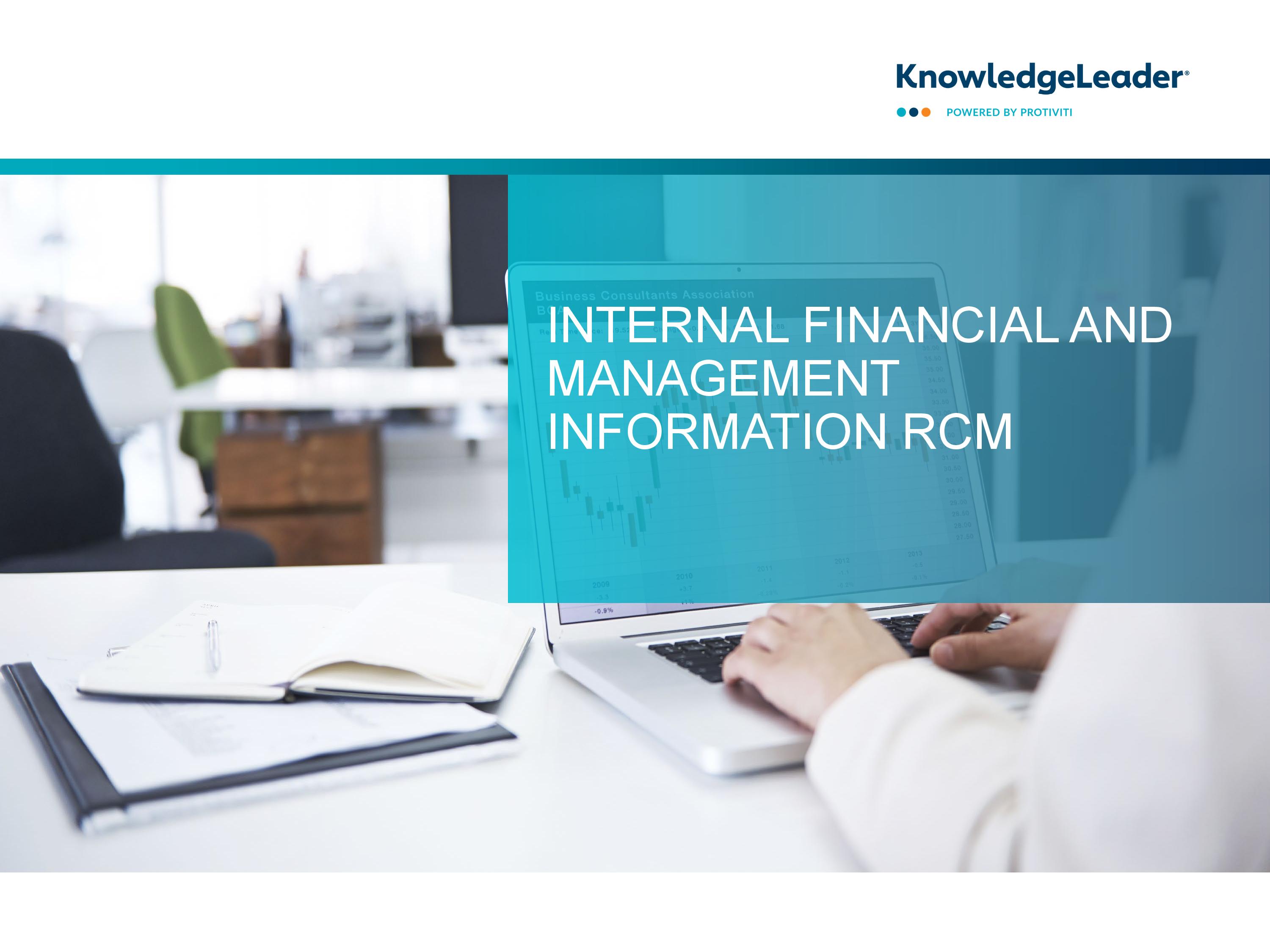Internal Financial and Management Information RCM

A successful risk management strategy requires a strong internal control environment. The RCM format emphasizes that strong and risk-oriented internal control environments are often optimized with automated/manual controls, depending on the situation.
An RCM provides an overview of different control objectives that organizations should take into consideration and the corresponding controls to safeguard the company against risks which may arise if not checked timely. Once customized to an organization, this document can help the user in assessing each control. The control assessment can then also be summarized to develop an action plan.
This document outlines risks and controls common to the 5.3.1 Internal Financial and Management Information process in a risk control matrix (RCM) format.
Sample risks include:
- Decisions may be made on the basis of incomplete or inaccurate information in the subsidiary ledger or record (e.g., a customer's order may be rejected or delayed because of inaccurate perpetual inventory records).
- Internal reports are financially focused and not operationally focused.
- Long report preparation cycle times delay management decisions on corrective actions to operating/financial issues.
- Management may have inadequate information to evaluate the performance and efficiency of a single department; this could have an adverse impact on operations.
This document can be used as a sample RCM and is not meant to be an exhaustive list of risks and controls. The KnowledgeLeader team will periodically update this RCM with new content. Organizations should select, update and modify the risks and controls included in this document to ensure that it reflects business operations.